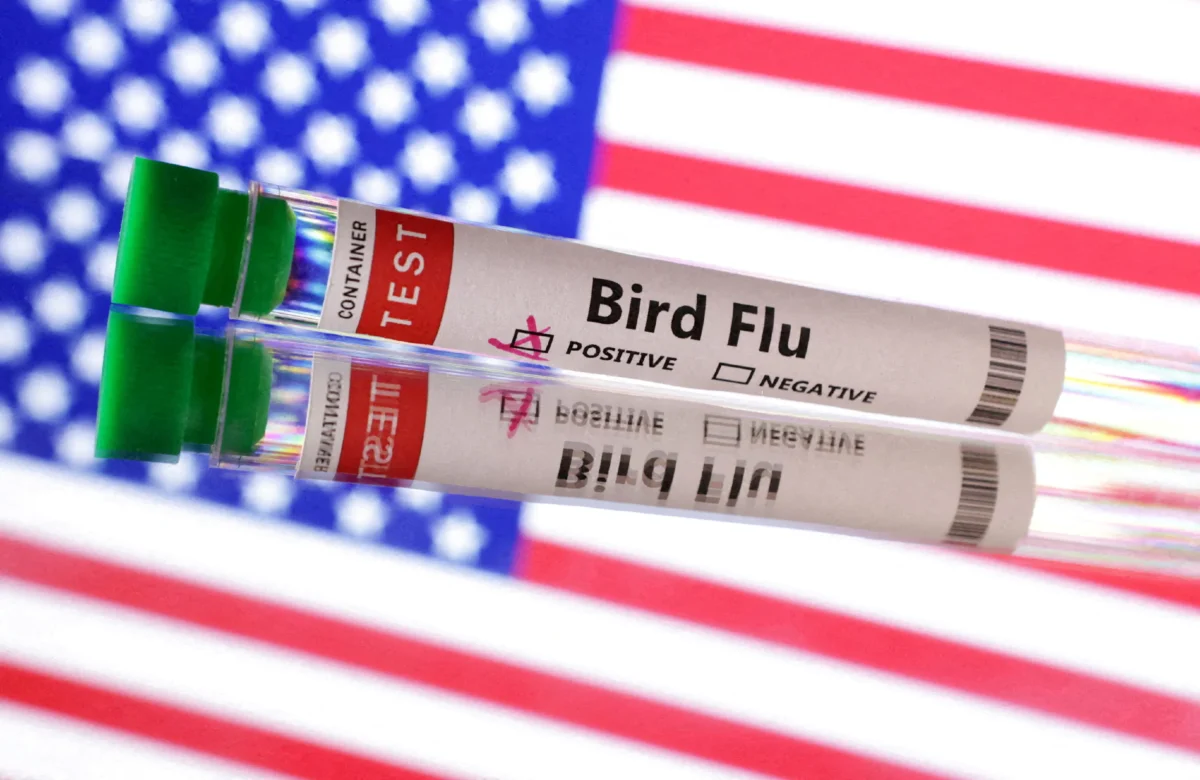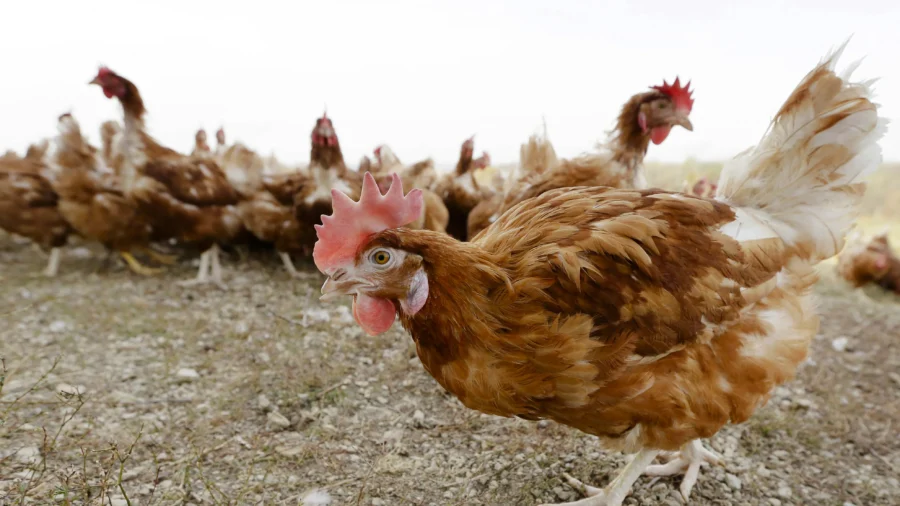Three people from Washington state have tested positive for bird flu after they were exposed to infected poultry, increasing the total number of human cases in the United States this year to 41, according to health authorities in Washington and Oregon.
The Washington State Department of Health reported that the new infections were among workers who cleaned facilities at a chicken farm where birds had been slaughtered to contain the virus. Those who showed signs of symptoms, such as red eyes and respiratory issues, or were likely exposed, were tested, they said in an email to NTD News.
The infected individuals had tested positive at the Washington State Public Health Laboratory but tested negative at the Centers for Disease Control and Prevention (CDC) laboratory, a spokesperson said.
The Oregon Health Authority said they identified the three new cases after those infected had traveled from Washington to Oregon.
“At this time, the risk for the general public remains low,” said Dr. Melissa Sutton, medical director for respiratory viral pathogens at Oregon Public Health, in an Oct. 31 statement.
Those infected have since returned to Washington and are being monitored by public health staff for 10 days since their last exposure, the health authority said.
Of the 41 total cases in the United States this year, nine are from Washington, the CDC said. All but one case involved farm workers with known contact with infected animals, with the exception of an individual in Missouri, according to the agency.
Loss of Over 100 Million Poultry Birds
The outbreak has taken a toll on the poultry industry. Since 2022, the virus has resulted in the loss of over 100 million poultry birds, according to CDC Data. The virus has also spread to more than 400 dairy herds in 2024, data shows.
The U.S. Department of Agriculture confirmed on Oct. 30 the first detection of H5N1 bird flu in a pig on a backyard farm in Oregon. The infection marks the first account of the virus found in swine in the United States.
The Oregon Health Authority confirmed no infections among Oregon residents and no evidence of human-to-human transmission.
Sutton said, “People who have had close or prolonged, unprotected exposures to infected birds or other animals, or to environments contaminated by infected birds or other animals, are at increased risk of infection.”
To mitigate the risk of infection, health authorities recommend avoiding contact with sick or dead birds or animals, including their droppings or litter. They also advised against consuming unpasteurized or raw dairy products, including milk or cheese.
A recent study has found a potentially dangerous strain of bird flu that infected a farm worker through contact with dairy cows. The virus, which caused mild eye inflammation in the worker, proved deadly in laboratory animals, according to research published in the scientific journal Nature.
The study—announced by the National Institutes of Health in a statement on Oct. 28—noted that the virus isolated from the worker has a mutation often seen in bird flu viruses that can affect mammals, where boosted virus growth and production can pose a risk for humans.
Findings showed that even a tiny amount of the virus was lethal to mice, infecting all 15 types of tissues they examined. It was also deadly in ferrets, which react to the flu similarly to humans. All infected ferrets died within five days, with high levels of the virus found in their respiratory systems, the study reports.

If Virus Adapts
The recent discovery of the Oreogon pig infected with the virus has led some health experts to warn of a possible threat if the virus were to adapt.
“Pigs can be infected with multiple types of flu, and the animals can play a role in making bird viruses better adapted to humans,” Jennifer Nuzzo, a pandemic researcher at Brown University, told The Associated Press.
Nuzzo said it’s important to monitor the situation closely.
“If we’re trying to stay ahead of this virus and prevent it from becoming a threat to the broader public, knowing if it’s in pigs is crucial,” she said.
Others, including Troy Sutton, a flu virus researcher at Penn State, said there is no need for immediate panic.
“It isn’t a one-to-one relationship, where pigs get infected with viruses and they make pandemics,” he told the Associated Press. He added that while the Oregon pig infection “is noteworthy … it doesn’t change the calculation of the threat level.”

